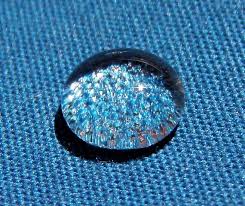A team of researchers from Missouri University of Science and Technology and National and Kapodistrian University of Athens in Greece have demonstrated a more efficient, less cost-prohibitive way to split water into its elements of hydrogen and oxygen. Their approach could make hydrogen fuel a more viable energy source in the future while addressing the technological challenge of developing clean and renewable energy without depleting earth’s natural preserves.
In research published recently in the journal ChemSusChem (Chemistry & Sustainability Energy & Materials), Dr. Manashi Nath, associate professor of chemistry at Missouri S&T, and her colleagues describe how a catalyst using the metal nickel tetrahedrally coordinated to selenium in a coordination complex resulted in a more efficient approach to splitting water via electrolysis. The use of nickel, which the researchers describe as an “earth-abundant” resource, could make the process of water splitting more feasible as a means to develop clean hydrogen as an energy source from water.
Most methods for producing hydrogen and oxygen from water require large amounts of energy and are cost-prohibitive. In addition, the best catalysts to obtain hydrogen from water require the use of expensive precious metals, such as platinum, and are therefore not competitive with current approaches to energy production.
But the research by Nath and her colleagues show that an electrocatalyst containing nickel and selenium is able to produce hydrogen and oxygen from water in a more efficient, less expensive manner than other methods.
“Our work shows that it is possible to obtain a full water splitting with high production efficiency and stability with a simple and affordable catalyst containing nickel and selenium,” Nath says. “The novelty of this work is twofold. First, nickel is the main catalytic center which is known to be earth abundant, and second, that same catalyst can be used for both hydrogen and oxygen generation, which dramatically reduces complexity and cost of the device.
“Very few reports are available where the same catalyst can be used for both of oxygen and hydrogen production,” Nath adds.
“I strongly believe that developing technology for clean and renewable energy generation is crucial,” Nath says. “In this quest, materials innovation plays an even bigger role. Being chemists, our duty is to try to design environmentally friendly new functional materials with high performance for the next generation energy devices.”
“This discovery will significantly benefit the search for an efficient water splitting catalyst,” write the researchers in the cover profile of the Nov. 17, 2016, issue of ChemSusChem.
Nath’s co-authors on the journal article are Dr. Jahangir Masud, a post-doctoral researcher at Missouri S&T, and collaborator Dr. Panayotis Kyritsis and his group members Dr. Polydoros-Chrysovalantis Ioannou and Dr. Nikolaos Levesanos, all from National and Kapodistrian University of Athens, Greece.
If our reporting has informed or inspired you, please consider making a donation. Every contribution, no matter the size, empowers us to continue delivering accurate, engaging, and trustworthy science and medical news. Independent journalism requires time, effort, and resources—your support ensures we can keep uncovering the stories that matter most to you.
Join us in making knowledge accessible and impactful. Thank you for standing with us!

